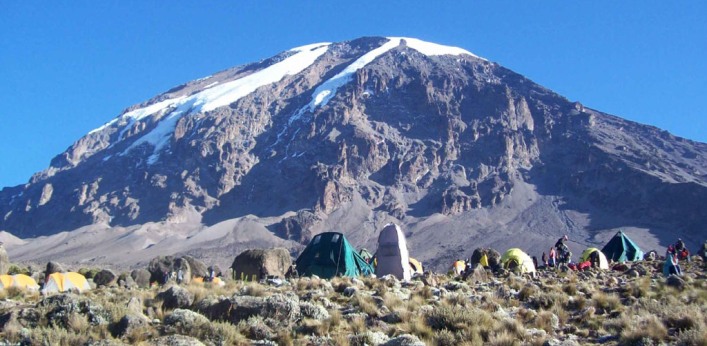Experience the ultimate Mount Kilimanjaro adventure with Jadi Safaris Kenya and Tanzania’s trusted safari and trekking experts.
This 9-day Machame Route trek combines adventure, nature, and cultural encounters, guiding you to Africa’s highest peak Uhuru Peak (5895m). With professional guides, quality camping gear, and personalized service from Jadi Safaris, you’re guaranteed a safe, memorable, and life changing climb.

Day 1: Nairobi – Arusha
Begin your Kilimanjaro adventure with Jadi Safaris’ transfer from Nairobi to Arusha by shuttle bus. Arrive in time for lunch, relax, and shop for hiking gear before dinner and overnight at an Arusha Hotel.
Meals: Dinner | Accommodation: Arusha Hotel
Day 2: Machame Gate (1490m) – Machame Camp (2980m)
Hiking time: 7 hours
Distance: About 18 km’s
Habitat: Montane forest
Start your trek with Jadi Safaris’ expert mountain team. Hike through lush rainforests to reach Machame Camp. Expect a scenic but challenging day surrounded by nature and wildlife.
Meals: Breakfast, Lunch, Dinner | Accommodation: Machame Camp
Day 3: Machame Camp – Shira Camp (3840m)
Hiking time: 6 hours
Distance: About 9 km’s
Habitat: Moorland
Climb steadily through the moorland zone with panoramic views of Kibo Peak. Reach Shira Camp for dinner and an incredible night under the stars.
Meals: Breakfast, Lunch, Dinner | Accommodation: Shira Camp
Day 4: Shira – Lava Tower – Barranco Camp
Hiking time: 7 hours
Distance: About 15 km’s
Habitat: Semi desert
Today offers acclimatization as you ascend to 4630m at Lava Tower, then descend to Barranco Camp. Stunning views of glaciers and the Great Barranco Wall await.
Meals: Breakfast, Lunch, Dinner | Accommodation: Barranco Camp
Day 5: Barranco – Barafu Camp (4550m)
Hiking time: 7 hours
Distance: About 13 km’s
Habitat: Alpine desert
Trek through the alpine desert and tackle the Barranco Wall. Reach Barafu Camp — your base before the summit attempt. Rest early and prepare for your midnight climb.
Meals: Breakfast, Lunch, Dinner | Accommodation: Barafu Camp
Day 6: Summit Day – Uhuru Peak (5895m) – Mweka Camp (3100m)
Barafu camp (4550m)-Uhuru Peak (5895m)-Mweka (3100m)
Hiking time: 8 hours to reach Uhuru Peak
7/8 hours to descend to Mweka
Distance: About 7 km’s ascent – 23 km’s descent
Habitat: Stone scree and ice-capped summit
Begin your ascent at midnight and reach Uhuru Peak at sunrise — the “Roof of Africa.” Celebrate with photos and descend to Mweka Camp for a well-deserved rest.
Meals: Breakfast, Lunch, Dinner | Accommodation: Mweka Camp
Day 7: Mweka Camp – Mweka Gate – Moshi
Hiking time: 3 hours
Distance: About 15 km’s
Habitat: Forest
After breakfast, descend through lush forests to Mweka Gate. Receive your Kilimanjaro summit certificate, then transfer to Moshi for dinner and celebration.
Meals: Breakfast, Lunch, Dinner | Accommodation: Moshi Hotel
Day 8: Moshi – Nairobi – Departure
Enjoy breakfast before transferring back to Nairobi by shuttle. Jadi Safaris will assist with your transfer to your hotel or Jomo Kenyatta International Airport.
Meals: Breakfast
✅ What’s Included
-
All transfers (Nairobi–Arusha–Moshi)
-
Professional mountain guides and porters
-
Full-board camping meals
-
Park fees and government taxes
-
Tents, mattresses, and camping equipment
-
Rescue fees and certificate for successful climbers
❌ What’s Not Included
-
International flights and visas
-
Personal climbing gear (available for hire)
-
Tips, drinks, and personal expenses
-
Travel insurance
Why Climb with Jadi Safaris
Jadi Safaris ensures your Kilimanjaro climb is not just an adventure it’s a journey of endurance, discovery, and personal triumph. With certified guides, safety-first planning, and top-quality service, you’ll conquer Africa’s highest mountain confidently.
